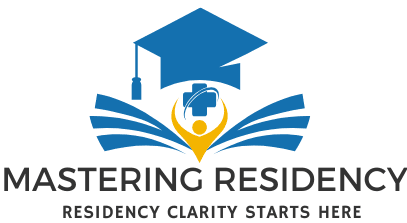International Students
If you're an international medical graduate (IMG) applying to residency programs in the U.S., you probably have a few big questions on your mind:
How can I stand out during interviews?
Will strong USMLE scores be enough?
How important is U.S. clinical experience, really?
What are program directors looking for in an IMG?
The residency interview is your chance to show that you're more than just a test score. It's about communication, cultural fit, and proving that you can thrive in a U.S. hospital setting. Here's how you can make yourself more competitive.
1. Get Real U.S. Clinical Experience (USCE)
Nothing makes a bigger impact on your application than hands-on experience in the U.S. health system. Clinical rotations, observerships, and externships not only show you're familiar with how medicine is practiced here, but they also help you earn strong letters of recommendation from U.S. doctors—something programs really value.
Programs like those at University of Miami and Mount Sinai actively recommend USCE for IMG applicants. Aim for rotations in your target specialty whenever possible.
2. Crush Your USMLEs—Especially Step 2 CK
Now that Step 1 is pass/fail, Step 2 CK has taken center stage. If you're an IMG, a high score here (think 240 or above) can help you rise above the competition. It tells programs you have the knowledge base to succeed, even if you trained abroad.
3. Secure Strong Letters of Recommendation (LORs)
Try to get at least three letters from U.S. physicians in your specialty. These carry more weight than letters from your home country, as they give programs direct insight into how you work in a U.S. environment.
4. Practice for Interviews with a U.S. Audience in Mind
Communication style matters. Practice speaking clearly and concisely. U.S. interviews often use behavioral questions, so prep with the STAR method (Situation, Task, Action, Result) to keep your answers focused.
Be aware of cultural nuances—make eye contact, listen actively, and don’t interrupt. These may seem minor but can make a big difference in how you're perceived.
5. Know the Etiquette and Expectations
Show up early, dress professionally, and treat every interaction as part of your interview—from the coordinator’s emails to the pre-interview dinner (if there is one). Soft skills and professionalism are just as important as clinical knowledge.
6. Build Relationships and Use Your Network
We cannot overstate just how important connections matter. Whether it's through rotations, conferences, or alumni from your medical school, any relationship that gets your name in front of a program director can help. Some programs are more IMG-friendly than others, so having someone vouch for you can open doors. We know program directors who have gone back and selected an applicant based on a recommendation. Trust us, connections can get you a spot.
7. Apply Broadly and Strategically
Don’t limit yourself to only top-tier programs. Apply to a wide range, especially IMG-friendly ones. Data shows that IMGs who rank 8–10 programs have a 90%+ chance of matching.
8. Tell Your Story
Use your personal statement and interview to show who you are beyond the application. Have you overcome challenges? Switched careers? Learned from a failed match cycle? These stories show resilience and growth—qualities every program wants.
9. Engage in Research or Academic Work in the U.S.
If you have time, participating in U.S.-based research or quality improvement projects can add depth to your application and show commitment to continuous learning.
Final Thoughts
Making the leap from international training to a U.S. residency is tough—but absolutely doable. With strong clinical experience, excellent communication, and a clear, compelling story, you can prove that you're ready to thrive in any residency program.
Let us know if you’d like mock interview tips or help finding IMG-friendly programs!
